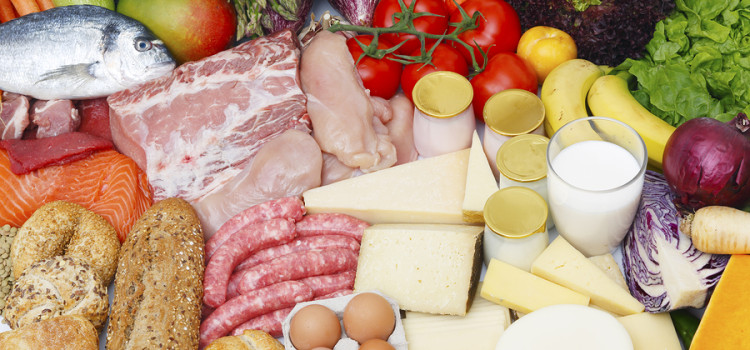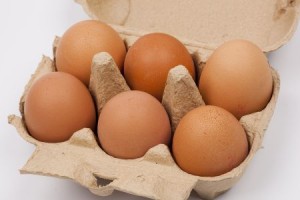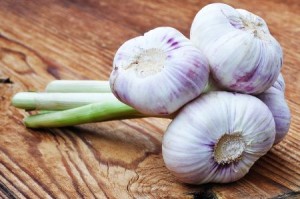It sounds simple: a gluten-free diet is set of eating habits that omits gluten.
In practice, however, going gluten-free is a major lifestyle change. It means rethinking where you shop, what you buy, what you cook, and—of course—what you eat. There are gluten-free substitutes for just about everything these days (even gluten-free ice cream cake!), but that doesn’t mean you want to live on them. Going gluten-free is about making good choices every day of your life.

Gluten is a major ingredient in a lot of what we buy. Did you know that you can find gluten in French fries? In ice cream? Gluten is everywhere we look, and as more and more people have become concerned about gluten sensitivity, gluten-free versions of foods have filled the shelves of major grocery stores around the world.
However, healthy gluten-free living isn’t as easy as walking down the gluten-free aisle and picking up substitutes for all your old favorite junk foods. When you’ve taken on a gluten-free diet, hopefully you’ve done so in the interest of improving your well-being.
So start by looking for balance. Rather than just filling the holes of what you can’t eat, aim to make your diet healthier and more balanced than it ever was before. Visit some old food groups you’ve been avoiding. Get into protein-rich foods such as meat, seafood, legumes, and even grain-like delicacies such as quinoa. Learn some fantastic recipes that get you feeling excited about fruits and vegetables. Whatever it takes, your gluten-free lifestyle can provide the perfect boost to build that healthy body you’ve always dreamed about.
Gluten-Free Food List: Naturally Gluten-Free
Shopping for gluten-free groceries doesn’t have to be a nightmare. While many people may have the impression that the gluten-free shopper has to check the label of every single item purchased, they’re forgetting something important. So many of the best foods we eat—or at least, what we should be eating if we keep to a healthy, balanced diet—never had any gluten in them in the first place.
Consider these:
- Fruits
- Vegetables, including starchy items such as corn and sweet potato
- Legumes
- Nuts
- Seeds, including grain-like quinoa
- Whole rice and other “ancient” grains
- Meat
- Chicken
- Fish and seafood
- Eggs and dairy
None of the categories listed above contain or ever contained gluten, so barring frequently contaminated brands (shop for oats carefully!), you don’t need to search out special versions—in other words, don’t go looking for “gluten-free carrots.” However, this does assume that you will embrace the least-processed road toward optimal health, and not let the whole “balanced” part of a balanced diet fall to the wayside. For example, an avocado is gluten-free and nutritious, no question. But if you purchase factory-made guacamole or order it with nachos in a restaurant, that promise doesn’t hold anymore. It’s always better to make your own dishes out of all-natural ingredients—and needing to go gluten-free gives you another reason.
Gluten -Free Food List: Substitutes for Glutenful Foods
-Free Food List: Substitutes for Glutenful Foods
Going gluten-free can be the healthiest decision of your life, even if you don’t have a gluten allergy. Just as vegans tend to become creative in their cuisine, those who give up gluten are finally given that extra shove to reach a balanced diet. When regular store-bought waffles are no longer an option for breakfast, you may turn to making your own with whole ingredients. When your sandwiches can’t be built around regular store-bought bread, you might consider making your own bread without undesirable fats, preservatives, and other artificial additives. The same can be done for pasta, desserts, snacks, and more. It can also result in lower overall carbohydrate intake in people who are seeking to manage certain health risks, who would then turn to building at least some meals on produce and proteins, or any other number of healthy possibilities.
When you go shopping for gluten-free substitutes of the foods you love, be careful about labeling. It’s not enough to read the ingredients, and “wheat-free” does not always mean “gluten-free.” Both health food stores and even many traditional grocery stores now sell gluten-free versions of some of the best-loved wheat products such as pasta, crackers, bread, and a wide variety of baked goods. If you want to try your hand at these at home, just look for the alternative baking flours labeled “gluten-free,” and make sure the label lists whole ingredients that are healthy in any context, and reflects a balanced nutritional composition. That label is your new best friend.
Gluten-Free Food List: Gluten-Free “Grains” and other Starches
Many grains contain gluten, so of course they’re out of the picture for us. There are, however, plenty of naturally gluten-free grains that can be found easily in a grocery store (if not your typical grocery store, certainly in a local health food shop). If you purchase in smaller quantities (rather than from open bins), it’ll lower the chances of cross-contamination. (Reminder: Cross-contamination means that although the product doesn’t contain any gluten ingredients per se, it was processed using the same equipment that processes gluten.)
To get you started on your gluten-free grain shopping, here’s a list of perfectly safe starchy products according to the Celiac Disease Association:
- Amaranth
- Arrowroot
- Buckwheat grains and groats (kasha)
- Cassava/Tapioca/Yuca
- Corn
- Millet
- Gluten-free oat flakes
- Gluten-free oat groats
- Parsnip
- Potato, all types
- Quinoa
- Rice, all types
- Sago
- Sorghum
- Teff
- Yucca
- Chia seed
- Flax seed
- Beans
- Lentils
- Lupine
- Soy
- Flours made from nuts, seeds, legumes, and starchy fruits and vegetables
Note: Oats are very often cross-contaminated with gluten while being processed in factories. It’s best to only use oats and oat products that are clearly labeled as gluten-free.

Gluten-Free Food List: To Be Consumed Liberally vs. Occasionally
Ideally, the gluten-free eater shouldn’t be stuck on asking “Should I avoid ‘X’?” Once you’ve committed yourself to a gluten-free life, it needs to become more than that.
Having celiac disease or gluten sensitivity is about finding what you can eat—it’s about knowing what your body tolerates and what it doesn’t, and making the best of it and everything else. The question then becomes, “What is the best, gluten-free meal plan to promote my long-term health?”
Nutritionists agree that like any other set of dietary habits, gluten-free cuisine should be into foods that should be eaten liberally and foods that are better consumed just occasionally.
- Liberally—as much and as often as you like, within the frame of your general nutritional needs
These are essentially no different from the recommendations for any healthy lifestyle, but with a slightly different selection of starchy and ready-made foods.
- Occasionally and in moderation—treats and such (because deprivation is rarely healthy!)
Living on ready-made gluten-free “substitutes” is often just barely better than living with gluten, unless you know where to find the best of the best. Health-oriented stores such as those listed in our Shopping Links for Healthy Foods are a great place to start, but there are still many potential traps. Of course in celiacs, even the more refined substitutes won’t bring about the terrible side-effects of breaking a gluten-free diet, but to rely on them fully would be to deny yourself the chance to really embrace all you’ve been missing in the rest of the food pyramid. If you’re going to try them out, good for you. Just make sure that you view them not as the centerpiece of your daily food intake but as a special treat to supplement all those vegetables, clean proteins, and good fats you’ve been eating. For example, there’s nothing wrong with a slice of gluten-free birthday cake—but it’s not your birthday every morning.
In Summary…
The easy way to follow a gluten-free diet is to live your life exactly as you always have, simply seeking out the “gluten-free” options among and label on all your old favorites—and perhaps find some new ones. But if gluten-free living is anything, it’s an opportunity. People are far better at sustaining new habits during moments of transition in their lives—for example, the first day of that new job might be the perfect time to start that morning jogging habit you’ve been eyeing the last decade. Going gluten-free is definitely a transition, and with all that change in the air you might take quite well to some positive change.
Want to know more about how the Trim Down Club can cater to your Gluten Free Diet needs?
Want to Learn the Truth about Gluten? Or perhaps you want to see what the rest of the internet has to say about Gluten?
References and Resources
- Academy of Nutrition and Dietetics (AND). Celiac Disease. Retrieved 21 May 2015
- Celiac Disease Foundation (CDF). What Can I Eat? Retrieved 21 May 2015




Where do I but the ingredients I have never heard of some of some of them.
First day today no idea where to start,
Hi, Jacqui. Don’t worry about moving fast – just ease into the program and make little changes that add up. The goal is to make it sustainable so that you adopt habits for the long-term.
The foods in our lists are actually collected from around the world (and available in the UK), but lesser known to many. They were selected because they are less mass-produced and therefore relatively unmanipulated and more nutritious and supportive of health and healthy weight management. I encourage you to take advantage of our shopping guide https://www.trimdownclub.com/where-to-buy-UK; one of the sites, http://www.goodnessdirect.co.uk, offers nice explanations of their foods. Regular supermarkets such as Tesco, Asda, and Waitrose are increasingly carrying these items as health-conscious consumers are increasingly requesting them; Holland and Barrett carries even more, of course, and Whole Foods Market even more.